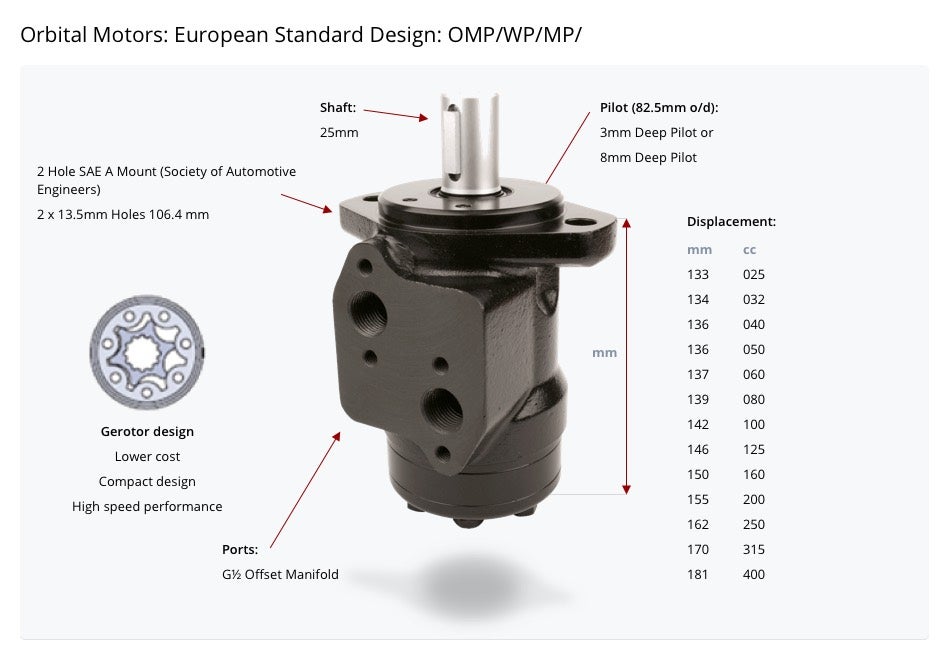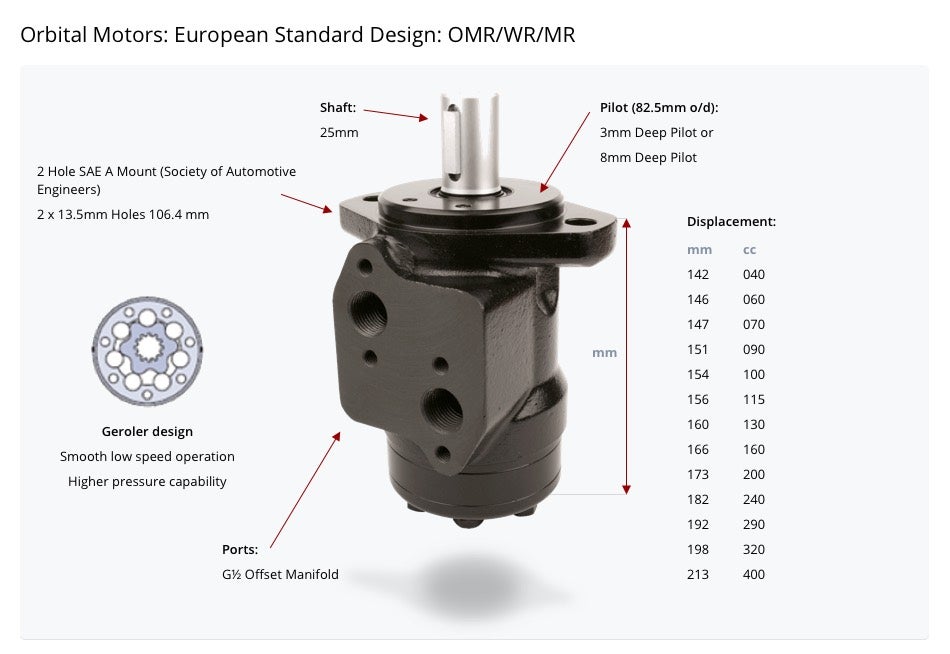Orbital motors are the workhorses of all sorts of agricultural and construction machinery. From time to time, depending on the build quality of the orbital motor in question, as well as its age and workload, there’s the risk of reduced performance and outright failure. The first sign you’ll usually see that an orbital motor is failing is dripping oil. Depending on how hands-on you are, you may want to replace the motor yourself rather than take your equipment to a dealer for replacement and servicing.
Broadly speaking, there are three types of orbital motor you’ll find in farm equipment ranging from pickers and balers to tractors and harvesters. As you’ll see in the images here, two are identical to look at, while the third is distinctly different.
The “S” Orbital Motor
Let’s look at the visibly different orbital motor first, because identifying it is straightforward. If your motor still has a label on it, you should see a product code or name ending in “S”. That should be the case regardless of the manufacturer. You’ll typically find this sort of motor on machinery designed for robust, impact-resistant applications with high loads, such as driving an axle and wheel. It’s immediately identifiable by its shape and the side ports at the opposite end to the shaft. Measuring the displacement will give you the model size you need to source your replacement.
 The “S” Orbital Motor
The “S” Orbital Motor“P” and “R” Orbital Motors
The other two orbital motors are a rather different story. Without disassembling them, they look identical. So, how can you tell them apart? First, look for an identifying label on the part itself. If it’s still there, and hasn’t faded or been painted over, you’ll see a code that ends in either “P” or “R”. If you find this information and can measure the displacement accurately, as shown in the diagrams, you should be able to order the correct replacement motor. That said, if your farm machinery was second-hand when you acquired it, can you be sure that the previous owner hadn’t replaced that motor incorrectly?
It would be an easy mistake to make. In some applications, either a “P” or “R” motor would do the job, albeit not as well as the correct model should. It might function, but be less smooth or powerful in operation, wear faster and fail sooner.
Manufacturer instructions usually list only their own part numbers, rather than the reference ending “P” or “R”, which would limit your options. And without knowing that all-important letter, the only way to be certain of the type or motor is to take it apart. And we strongly recommend that you don’t do that. The tiniest difference in pressure when tightening the casing screws, spigot and flange is of critical importance. The seals are intricate and the torque figures matter. Repairing an orbital motor is a matter of absolute precision and only to be undertaken by an expert. Replacement is far more advisable. Inside the motor, as you can see from the two images here, the key difference between the “P” and the “R” is the gearwheel.
The “P” uses the gerotor design. It’s typically a lower-cost product with a compact design, and suited to high-speed applications.
 The “P” uses the gerotor design
The “P” uses the gerotor designThe “R”, on the other hand, uses the geroler gearwheel, which is designed for higher pressures than the “P” and for smoother low-speed operation.
 The “R” uses the geroler gearwheel
The “R” uses the geroler gearwheelAnd since the displacement – the length of the casing – can be the same for both “R” and “P” orbital motors, your tape measure won’t help you tell the difference.
Our best advice if you have a leaking or failed orbital motor is to photograph the motor and contact your Kramp account manager or your local equipment dealer, either of whom will be able to help you. It’s the safest and most sensible course of action.
With the experts on the case, the only decision you’ll have to make is on the manufacturer of your replacement motor. Kramp stocks a range of orbital motors by a number of different manufacturers. Choosing which is not just a matter of cost, but a question of reliability. Products from some manufacturers, such as Danfoss, have an outstanding reputation for longevity and consistency in performance; a replacement motor should be performing at factory-new speeds, power and smoothness of operation for years to come. Other products will be cheaper, but are more likely to slow down, wear internally and leak sooner. Making the right decision depends on your equipment, when and how often it is used, and the best return for your money. Contact your Kramp adviser for independent advice.

